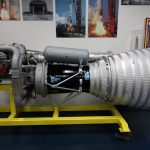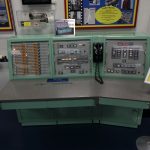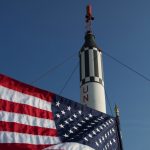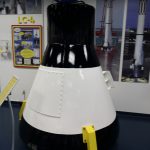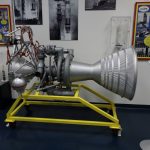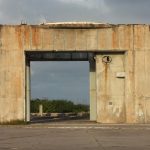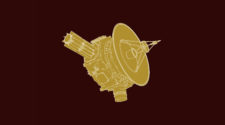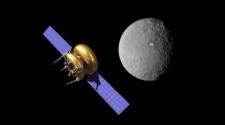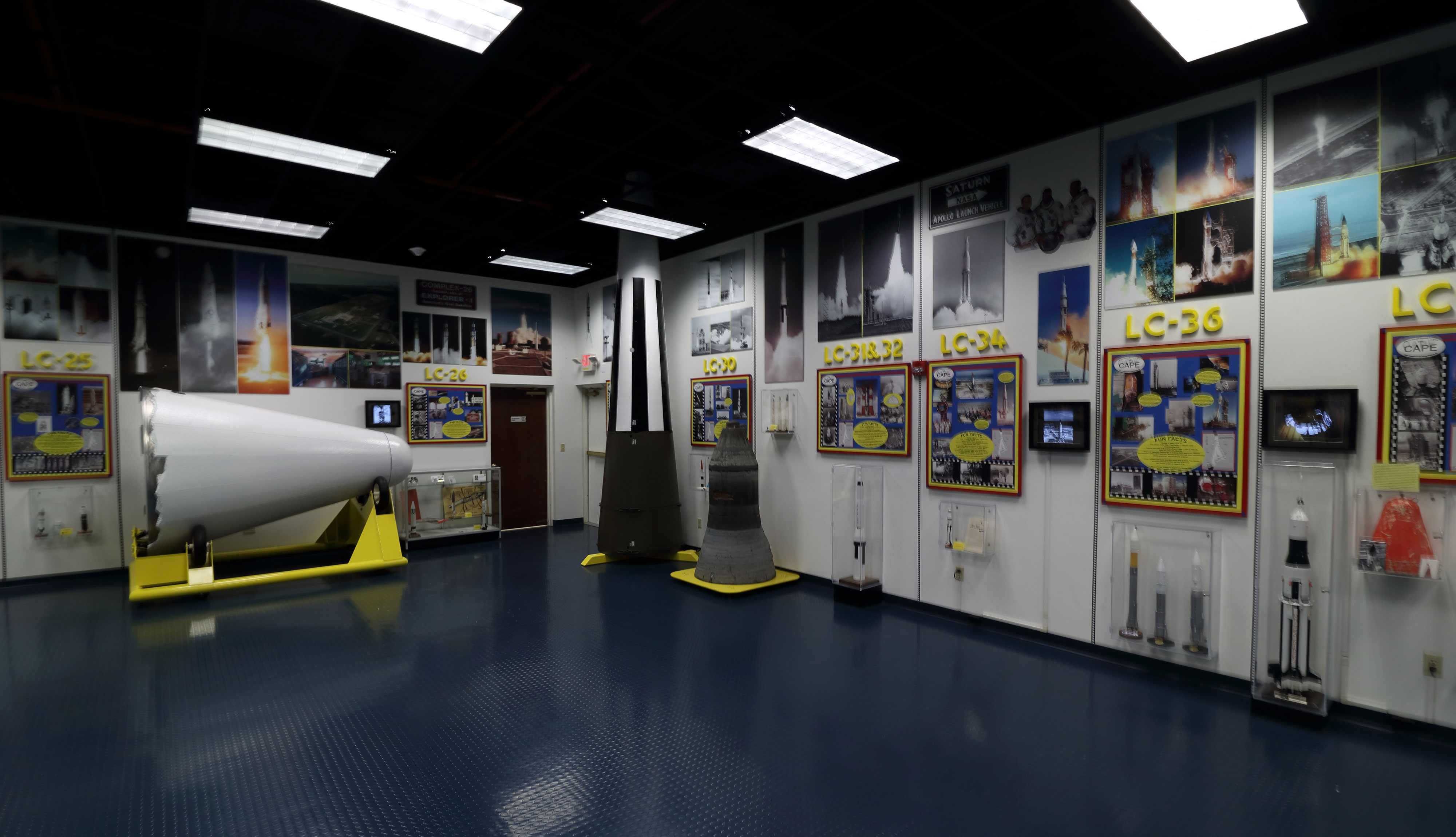
The Air Force Space & Missile Museum and separate History Center, both located in Cape Canaveral, Florida, provide a unique look back at past space adventures, hardware, and facilities. You’ll find the entrance to the History Center just outside the main entrance of the Cape Canaveral Air Force Station.
The History Center, located just off the parking lot provides visitors with information regarding each of the cape’s pads, both retired and active, including what type of vehicles launched from them, what missions, and other fun facts about each complex. Admission to the History Center is free.
There is a lot of history represented in the center. Many important unmanned launches occurred at Cape Canaveral Air Force Station, including the launch of the first American satellite, Explorer 1 on January 31st, 1958 from Launch Complex 26. All the manned Mercury missions launched from Cape Canaveral with the two sub-orbital flights launching from Launch Complex 5/6 and the four orbital flights launching from Launch Complex 14. In addition, all 10 manned Gemini missions launched from Launch Complex 19 at Cape Canaveral. Finally, Apollo 7 launched from Launch Complex 34 on the first manned Apollo flight.
Currently in use are Launch Complexes 37, 40, and 41 and information about those facilities and the vehicles currently launching from them is also available in the history center.
Also located in the History Center you’ll find numerous artifacts including an Atlas rocket booster engine built by Rocketdyne, a Minuteman Reentry vehicle, a Jupiter nosecone, a Titan I second stage rocket engine, a Mercury Capsule boilerplate, a Launch Complex 19 Titan test console and many more interesting artifacts.
You’ll normally find one of the dedicated volunteers there who will be happy to answer any questions you may have about the museum or its artifacts.
Don’t forget to check out the gift shop!
Another part of the Air Force Space and Missile Museum is located within the confines of Cape Canaveral Air Force Station. This includes the museum itself and a number of the launch pads used in the early days of space exploration. The Air Force used to provide a tour to those areas once a week, unfortunately the budget sequestration of 2013 cut the funding for that tour and it was never restored.
However you can still see those other areas, and more via an add-on tour available from the Kennedy Space Center Visitor Complex. Called the “Up Close Cape Canaveral: Then and Now Tour,” the bus tour is currently only offered Thursdays through Sundays at 12:20 p.m. Due to security requirements of the base, all participants must provide a valid form of identification, for American citizens, a U.S. government-issued Driver’s License or U.S. State ID card is required for all tour participants age 18 and over, and International adult and child participants must present a valid passport to take the tour.
On this tour you’ll see the museum’s Rocket Garden where you’ll find numerous launch vehicles including a Delta IV Common Booster Core, like the three used recently in the Delta IV Heavy NROL-37 launch. Also you’ll find a Minuteman I missile, a Firebee II target drone, a Titan I Intercontinental Ballistic Missile, a Corporal surface-to-surface guided missile, a Polaris A3 Fleet Ballistic Missile, and oddly enough, a railroad engine. The locomotive was once used to transport Titan missiles. You’ll discover other unique vehicles and artifacts in the Rocket Garden.
You’ll also see Launch Complex 26. There you will find the blockhouse, gantry, and pads located just off the rocket garden. This complex launched the first American satellite, Explorer 1 on January 31st, 1958. The blockhouse which sits a short 400 feet from the two pads has walls that are two feet in depth, windows comprised of 45 layers of glass totaling out at approximately one foot in thickness, and specially armored blast doors, all to protect the launch personnel working inside from any explosion occurring just outside their secure work area. The launch gantry towers 111 feet above the ground and was used for assembling and servicing launch vehicles at the complex.
Adjacent to Complex 26, you’ll find Launch Complex 5/6 where the first Americans to launch into space began their journeys. The first two Mercury program flights lifted off from Launch Pad 5 of the complex, Alan Shepard and Gus Grissom were the brave astronauts who took those first two sub-orbital flights and you can stand right where they lifted off from. On Pad 5 there is even a full-size replica of a Mercury Redstone launch vehicle to give you the feeling of what it was like back in 1961. Be sure to check out the launch ring on Pad 6, it was all that held that Redstone vehicle upright before it lifted off. Don’t forget to check out the Blockhouse located at Complex 5/6 which contains much of the original equipment used to launch those early Mercury flights.
The tour also will take you to other parts of the base that are not part of the Air Force Space & Missile Museum, including Launch Complex 14 where John Glenn launched in his Friendship 7 Mercury Capsule on top of an Atlas rocket to become the first American to orbit the Earth. You will also see Launch Complex 19, where all of the manned Gemini Missions launched from. And you’ll see Launch Complex 34 where the Apollo 1 crew, Gus Grissom, Ed White, and Roger Chaffee lost their lives when a fire broke out in their capsule on the pad during a routine test. While at LC-34 you may even witness a Delta IV rocket being prepared for launch at nearby Launch Complex 37. Another stop on the tour is the Cape Canaveral Lighthouse.
While visiting the Space Coast of Florida, take the time to head over to Cape Canaveral and check out the History Center and I highly recommend taking the “Up Close Cape Canaveral: Then and Now Tour” while visiting the Kennedy Space Center Visitor Complex to see other areas of the Cape Canaveral Air Force Station where space history was made.


